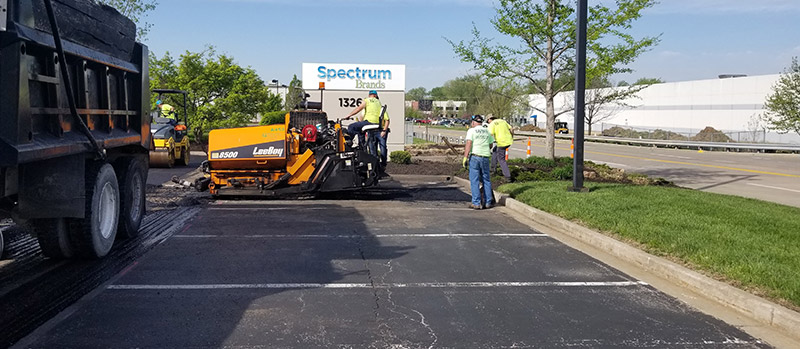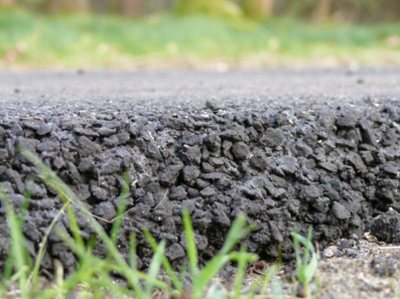The smart Trick of A1 Professional Asphalt & Sealing Llc That Nobody is Discussing
The smart Trick of A1 Professional Asphalt & Sealing Llc That Nobody is Discussing
Blog Article
A1 Professional Asphalt & Sealing Llc Fundamentals Explained
Table of ContentsFacts About A1 Professional Asphalt & Sealing Llc Revealed10 Simple Techniques For A1 Professional Asphalt & Sealing LlcOur A1 Professional Asphalt & Sealing Llc StatementsAbout A1 Professional Asphalt & Sealing LlcIndicators on A1 Professional Asphalt & Sealing Llc You Should Know

The oil in a vehicle engine is not simply oil. The REOB has all the ingredients that were in the waste oil as well as the wear metals from the engine (generally iron and copper).
By making several blends using various REOB examples and various asphalt binders, the variations largely can be balanced out. Numerous States supplied examples of recognized REOB structure to TFHRC researchers, who examined the examples to compare the percentage of added (recognized) REOB to the located (tested) amount. The analyses showed a similar percentage of added and found REOB.
Not known Details About A1 Professional Asphalt & Sealing Llc
None of those States recognized that the asphalt they were buying had REOB. One State insisted its samples had no REOB - https://www.blogtalkradio.com/a1asphaltsealng.
Of the 1,532 examples checked, 12 percent consisted of REOB, and some had considerably high levels of it at 1020 percent. The highest degree was 34 percent in an example from Texas, which TxDOT had used in a patching compound. This screening likewise disclosed the existence of phosphoric acid in 11 percent of the samples, and 2 percent contained ground tire rubber.
Two years earlier at TRB's annual meeting, the Federal researchers held an REOB workshop and offered the searchings for of their research laboratory examinations to a standing room-only crowd. Although some companies do not specifically outlaw REOB, they do impose physical examinations that prevent its useeffectively a restriction. a1 professional. Others do not outlaw it by spec, yet have contracts with asphalt providers to stay clear of making use of REOB
The 15-Second Trick For A1 Professional Asphalt & Sealing Llc
A handful do enable REOB, some within particular restrictions. For instance, Ohio and Texas restriction levels to much less than 5 percent of the asphalt. To develop a reliable examination method that all States can use, the TFHRC researchers established a round-robin test strategy. The individuals are 11 State highway companies (Illinois, Massachusetts, Minnesota, Mississippi, Montana, North Carolina, Oklahoma, South Carolina, Texas, Vermont, and Wyoming), 2 independent testing laboratories, the Ministry of Transportation in Ontario, Queen's College in Ontario, and an Ontario paving service provider.
In total amount, the scientists prepared and shipped 720 blends. The participants are evaluating the samples separately utilizing the guidelines offered by the TFHRC scientists. The round-robin screening is almost finished, and TFHRC remains in the procedure of gathering the outcomes. The outcome will certainly be a suggested AASHTO examination approach that any kind of State can embrace and utilize (a-1 asphalt).
The pavement with REOB, which lies 0.6 mile (1 kilometer) from the pavement without REOB, has identical subgrade, website traffic thickness, and climate. However, the sector of Highway655 with 5 to 10 percent REOB showed considerable fracturing. In this example, the presence of REOB was the recognized root cause of fracturing at a low temperature levels.
"In our experience in copyright, also tiny quantities of 23 percent can be a trouble." Likewise, an area of examination pavement in Minnesota (MN1-4) located to contain REOB additionally split prematurely. The pavement performed well for the very first 3 to 4 years, but then began to break. This pavement is likewise subject to reduced temperature levels.
The 15-Second Trick For A1 Professional Asphalt & Sealing Llc
The examinations were not considerable, yet they revealed that at degrees of 6 percent or even more, the tensile stamina of the asphalt went down significantly. At a level of 3.5 percent REOB, the variant in the physical test methods was greater than the effect of REOB. It was tough for researchers to analyze whether REOB was existing. https://padlet.com/a1asphaltsealng/my-stellar-padlet-8k4iv5oxbxezxc6c.

One binder criterion taken into consideration is the distinction in between the reduced temperature crucial spec temperature level for stiffness (S) in the flexing beam rheometer and the flexing beam of light rheometer creep incline (m-value) noted as Tcritical. 2 independent research study groups, one from AASHTO and the other from the Asphalt Institute, wrapped up that even more research is needed on the usage of REOB in asphalt.
Previously, all asphalt screening measured engineering properties such as rigidity. These examinations do not reveal what products had been included in the asphalt. One example obtained throughout the TFHRC study had a really odd analysis. The example had the following examination results: Superpave PG 64-28 with a heat quality of 67.3 Tcritical on the bending light beam rheometer was 6.7 levels Celsius.

Excitement About A1 Professional Asphalt & Sealing Llc
These results demonstrate there are weaknesses in the standardized design screening procedures that may be exploited. The manufacturer might have a financial advantage and the item passes all the standardized tests, yet the item might not be helpful to guaranteeing long-lasting efficiency. To address this problem and the growth of new asphalt additives and extenders, TFHRC is starting a research program to utilize handheld spectroscopic tools, x-ray fluorescence spectroscopy, and Fourier change infrared spectroscopy to allow analyses Continue to be carried out in the area instead of having to take samples back to the laboratory.
Report this page